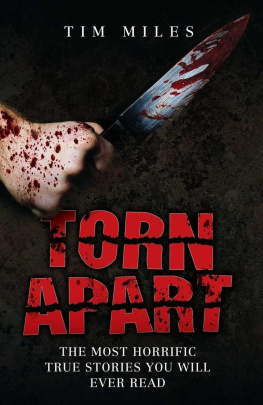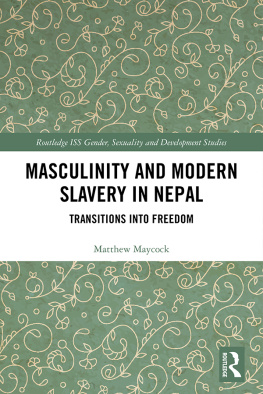
THE GEORGE GUND FOUNDATION
IMPRINT IN AFRICAN AMERICAN STUDIES
The George Gund Foundation has endowed
this imprint to advance understanding of
the history, culture, and current issues
of African Americans.
The publisher gratefully acknowledges the
generous contribution to this book provided
by the African American Studies Endowment
Fund of the University of California Press
Associates, which is supported by a major gift
from the George Gund Foundation.
Ties That Bind
AMERICAN CROSSROADS
Edited by Earl Lewis, George Lipsitz, Peggy Pascoe, George Snchez, and Dana Takagi
1. Border Matters: Remapping American Cultural Studies, by Jos David Saldvar
2. The White Scourge: Mexicans, Blacks, and Poor Whites in Texas Cotton Culture, by Neil Foley
3. Indians in the Making: Ethnic Relations and Indian Identities around Puget Sound, by Alexandra Harmon
4. Aztln and Viet Nam: Chicano and Chicana Experiences of the War, edited by George Mariscal
5. Immigration and the Political Economy of Home: West Indian Brooklyn and American Indian Minneapolis, 19451992, by Rachel Buff
6. Epic Encounters: Culture, Media, and U.S. Interests in the Middle East since 1945, by Melani McAlister
7. Contagious Divides: Epidemics and Race in San Franciscos Chinatown, by Nayan Shah
8. Japanese American Celebration and Conflict: A History of Ethnic Identity and Festival, 19341990, by Lon Kurashige
9. American Sensations: Class, Empire, and the Production of Popular Culture, by Shelley Streeby
10. Colored White: Transcending the Racial Past, by David R. Roediger
11. Reproducing Empire: Race, Sex, Science, and U.S. Imperialism in Puerto Rico, by Laura Briggs
12. meXicana Encounters: The Making of Social Identities on the Borderlands, by Rosa Linda Fregoso
13. Popular Culture in the Age of White Flight: Fear and Fantasy in Suburban Los Angeles, by Eric Avila
14. Ties That Bind: The Story of an Afro-Cherokee Family in Slavery and Freedom, by Tiya Miles
15. Cultural Moves: African Americans and the Politics of Representation, by Herman S. Gray
Ties That Bind

THE STORY OF AN AFRO-CHEROKEE FAMILY
IN SLAVERY AND FREEDOM
Tiya Miles

University of California Press
Berkeley and Los Angeles, California
University of California Press, Ltd.
London, England
2005 by the Regents of the University of California
Library of Congress Cataloging-in-Publication Data
Miles, Tiya, 1970
Ties that bind : the story of an Afro-Cherokee family in slavery and freedom / Tiya Miles.
p. cm. (American crossroads ; 14)
Includes bibliographical references and index.
ISBN 0-520-24132-0 (cloth : alk. paper)
1. Cherokee IndiansHistory19th century. 2. Cherokee IndiansMixed descent. 3. Cherokee IndiansKinship. 4. Indian slavesGeorgiaHistory19th century. 5. African AmericansGeorgiaMixed descent. 6. African AmericansGeorgiaKinship. 7. BlacksGeorgiaRelations with Indians. I. Title. II. Series.
E99.C5M553 2005
929'.2'0890597557096073dc22 2004006602
Manufactured in the United States of America
13 12 11 10 09 08 07 06 05
10 9 8 7 6 5 4 3 2 1
Printed on Ecobook 50 containing a minimum of 50% post-consumer waste, processed chlorine free. The balance contains virgin pulp, including 25% Forest Stewardship Council Certified for no old growth tree cutting, processed either TCF or ECF. The sheet is acid-free and meets the minimum requirements of ANSI/NISO Z39.481992 (R 1997) (Permanence of Paper).
For my dear grandmother, Alice Banks,
and
in memory of my grandfather, Ardell Banks
CONTENTS
ILLUSTRATIONS
MAPS
FIGURES
Following p. 84
SHOEBOOTS FAMILY TREE
The spelling of Cherokee names is variable in the records, and names are often difficult to read. The names given here are taken from the legal statement of William Shoeboots, made in 1888.
William did not give a Cherokee name for himself. Adapted from a tree by Joy Greenwood.

PREFACE
When I began work on this book several years ago, I wanted to tell a story. I imagined it would be about the intersecting lives of blacks and Indians in nineteenth-century America, about interracial and intercultural alliance, about shared meanings and joint resistance to slavery and colonialism. In the intervening years, however, I found, as veteran storytellers have known for longer than I have been alive, that the story is rarely what it seems on the surface and often encompasses many more stories. As I read secondary-source materials on Native American and African American histories in preparation for writing this book, the story that most arrested me was one about a slave woman: a black slave woman, owned by a Cherokee man who would later father her five children. Her name was Doll, his was Shoe Boots, and the tale of their life together was both complicated and painful.
The Shoeboots familyhistorical silence that often surrounds interactions between black and Native people.
While conducting research and speaking about this project in public and in academic venues, however, I found that the story of Dolls life in the Cherokee Nation was, in the view of many, an unspeakable thing. The specter of slaveowning Indians stirred up emotional, intellectual, and political trouble for contemporary African Americans and Native Americans alike who remember and imagine this past in differing ways. Some black people, I found, were reluctant to hear about American Indians who engaged in trading and owning slaves because they imagined Indians as the historical protectors of black runaways; still other African Americans were disinterested in hearing about American Indians, thinking that such a focus would siphon attention from black justice struggles. Some Native people felt regretful and even ashamed of this history; others denied it outright. And ironically, like their black counterparts, some Native people saw any engagement with African American history as detracting attention and stealing energy from American Indian justice struggles. It seemed that black slavery within Native American nations was an aspect of history that both black and Native people had willed themselves to forget. Their reactions seemed to echo an assessment made by cultural critic Sharon Holland, that there exists an ever-present attempt in America to disremember a shared past. For black and Indian peoples in the United States, this imperative to disremember is even more pressing, because memory contains not only the suffering we have endured in the vise of colonial expansion, genocide, and slavery but also the suffering we have endured at the hands of one another in this context of brutal oppression.
The desire to disremember, the desperate need to blot out the horrors of the past, is a central theme in Toni Morrisons epic novel of slavery in the United States,
Next page


















